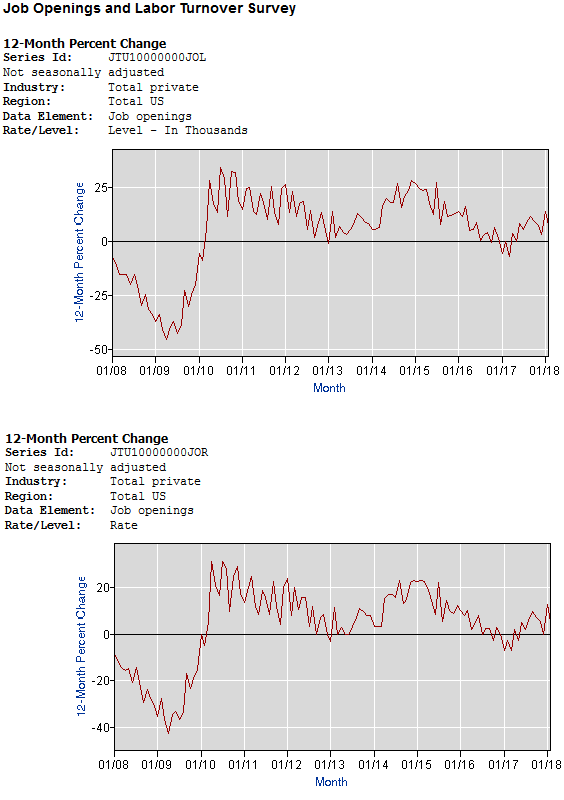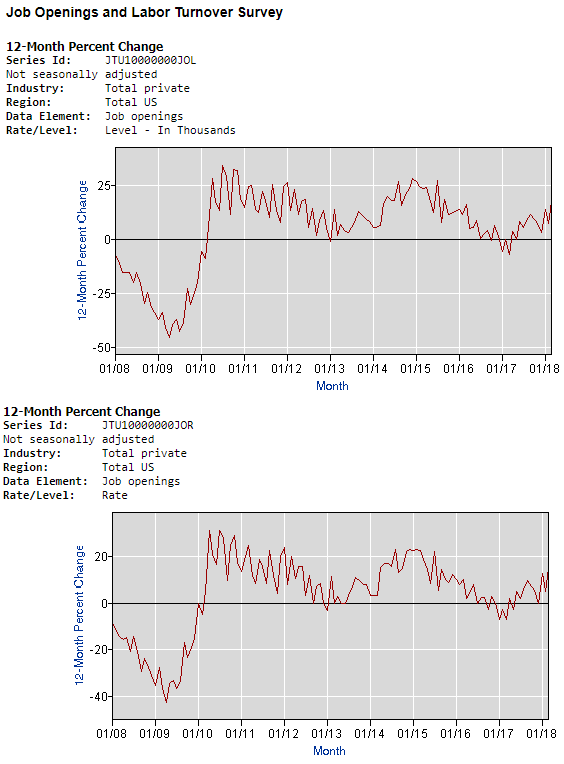The BLS Job Openings and Labor Turnover Survey (JOLTS) can be used as a predictor of future jobs growth, and the predictive elements show that the year-over-year growth rate of unadjusted private non-farm job openings improved.

Analyst Opinion of JOLTS Data
The headline seasonally adjusted view shows significant improvement in job openings. Although the unadjusted data analysis shows rate of growth improved, the year-over-year improvement is in the midrange of improvement seen since the end of the Great Recession. JOLTS non-adjusted job openings remain about average for what was seen in the last 3 years.
Market expectations from Bloomberg / Econoday was 6.000 M to 6.200 M (consensus 6.100 M) versus actual of 6.600 million.
The graphs below uses year-over year growth of JOLTS Job Openings – both the level of openings and rate of openings.
Last month’s graphs

This Month’s Graphs

The JOLTS Unadjusted Private hires rate (percent of hires compared to size of workforce) and the separations rate (percent of separations compared to size of workforce – separations are the workforce which quit or was laid off).
Unadjusted Hires (blue line) and Unadjusted Separation Levels (red line) – Non-Farm Private

Please note that Econintersect has not been able use the hire rate or the separation rate (or a combination thereof) to help in understanding future jobs growth. A Philly Fed study agrees with Econintersect’s assessment. JOLTS is issued a month later than the jobs data – and correlates against one month old data.
For information, the Econintersect Employment Index and the Conference Board’s Employment Index:

Caveats on the Use of JOLTS
This data series historically is very noisy which likely is a result of data gathering issues and/or seasonal adjustments. Therefore this series must be trended to provide any understanding of the dynamics. One of two months of good or bad data are not predictive.











Leave A Comment